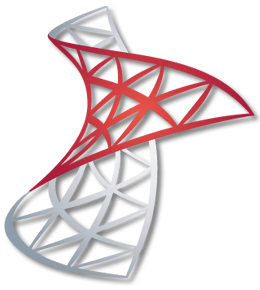Graphite vs SQL Server
A detailed comparison
Compare Graphite and SQL Server for time series and OLAP workloads
Learn About Time Series DatabasesChoosing the right database is a critical choice when building any software application. All databases have different strengths and weaknesses when it comes to performance, so deciding which database has the most benefits and the most minor downsides for your specific use case and data model is an important decision. Below you will find an overview of the key concepts, architecture, features, use cases, and pricing models of Graphite and SQL Server so you can quickly see how they compare against each other.
The primary purpose of this article is to compare how Graphite and SQL Server perform for workloads involving time series data, not for all possible use cases. Time series data typically presents a unique challenge in terms of database performance. This is due to the high volume of data being written and the query patterns to access that data. This article doesn't intend to make the case for which database is better; it simply provides an overview of each database so you can make an informed decision.
Graphite vs SQL Server Breakdown
 |
 |
|
| Database Model | Time series database |
Relational database |
| Architecture | Graphite can be deployed on-premises or in the cloud, and it supports horizontal scaling by partitioning data across multiple backend nodes. |
SQL Server can be deployed on-premises, in virtual machines, or as a managed cloud service (Azure SQL Database) on Microsoft Azure. It is available in multiple editions tailored to different use cases, such as Express, Standard, and Enterprise. |
| License | Apache 2.0 |
Closed source |
| Use Cases | Monitoring, observability, IoT, real-time analytics, DevOps, application performance monitoring |
Transaction processing, business intelligence, data warehousing, analytics, web applications, enterprise applications |
| Scalability | Horizontally scalable, supports clustering and replication for high availability and performance |
Supports vertical and horizontal scaling, with features like partitioning, sharding, and replication for distributed environments |
Looking for the most efficient way to get started?
Whether you are looking for cost savings, lower management overhead, or open source, InfluxDB can help.
Graphite Overview
Graphite is an open-source monitoring and graphing tool created in 2006 by Orbitz and open sourced in 2008. Graphite is designed for storing time series data and is widely used for collecting, storing, and visualizing metrics from various sources, such as application performance, system monitoring, and business analytics.
SQL Server Overview
Microsoft SQL Server is a powerful and widely used relational database management system developed by Microsoft. Initially released in 1989, it has evolved over the years to become one of the most popular database systems for businesses of all sizes. SQL Server is known for its robust performance, security, and ease of use. It supports a variety of platforms, including Windows, Linux, and containers, providing flexibility for different deployment scenarios.
Graphite for Time Series Data
Graphite is specifically designed and optimized for time series data. It uses the Whisper database format, which efficiently stores and manages time series data by automatically aggregating and expiring data based on user-defined retention policies. Graphite supports a wide range of functions for querying, transforming, and aggregating time series data, enabling users to create custom graphs and dashboards. However, as Graphite focuses exclusively on time series data, it may not be suitable for other types of data or use cases that require more advanced data modeling or querying capabilities.
SQL Server for Time Series Data
While Microsoft SQL Server is primarily a relational database, it does offer support for time series data through various features and optimizations. Temporal tables allow for tracking changes in data over time, providing an efficient way to store and query historical data. Indexing and partitioning can be leveraged to optimize time series data storage and retrieval. However, SQL Server may not be the best choice for applications requiring high write or query throughput specifically for time series data, as specialized time series databases offer more optimized solutions as well as a variety of developer productivity features that speed up development time for applications that heavily use time series data.
Graphite Key Concepts
- Metric: A metric in Graphite represents a time series data point, consisting of a path (name), timestamp, and value.
- Series: A series is a collection of metrics that are all related to the same thing. For example, you might have a series for CPU usage, a series for memory usage, and a series for disk usage.
- Whisper: Whisper is a fixed-size, file-based time series database format used by Graphite. It automatically manages data retention and aggregation.
- Carbon: Carbon is the daemon responsible for receiving, caching, and storing metrics in Graphite. It listens for incoming metrics and writes them to Whisper files.
- Graphite-web: Graphite-web is the web application that provides a user interface for visualizing and querying the stored time series data.
SQL Server Key Concepts
- T-SQL: Transact-SQL, an extension of SQL that adds procedural programming elements, such as loops, conditional statements, and error handling, to the standard SQL language.
- SSMS: SQL Server Management Studio, an integrated environment for managing SQL Server instances, databases, and objects.
- Always On: A suite of high availability and disaster recovery features in SQL Server, including Always On Availability Groups and Always On Failover Cluster Instances.
Graphite Architecture
Graphite’s architecture consists of several components, including Carbon, Whisper, and Graphite-web. Carbon is responsible for receiving metrics from various sources, caching them in memory, and storing them in Whisper files. Whisper is a file-based time series database format that efficiently manages data retention and aggregation. Graphite-web is the web application that provides a user interface for querying and visualizing the stored time series data. Graphite can be deployed on a single server or distributed across multiple servers for improved performance and scalability.
SQL Server Architecture
Microsoft SQL Server is a relational database that uses SQL for querying and manipulating data. It follows a client-server architecture, with the database server hosting the data and processing requests from clients. SQL Server supports both on-premises and cloud-based deployment through Azure SQL Database, a managed service offering in the Microsoft Azure cloud. SQL Server’s architecture includes components such as the Database Engine, which processes data storage and retrieval, and various services for reporting, integration, and analysis.
Free Time-Series Database Guide
Get a comprehensive review of alternatives and critical requirements for selecting yours.
Graphite Features
Real-time monitoring and visualization
Graphite provides real-time monitoring and visualization capabilities, allowing users to track and analyze their time series data as it is collected.
Flexible querying and aggregation functions
Graphite supports a wide range of functions for querying, transforming, and aggregating time series data, enabling users to create custom graphs and dashboards tailored to their specific needs.
Data retention and aggregation
Graphite’s Whisper database format automatically manages data retention and aggregation, reducing storage requirements and improving query performance.
SQL Server Features
Security
SQL Server offers advanced security features, such as Transparent Data Encryption, Always Encrypted, and row-level security, to protect sensitive data.
Scalability
SQL Server supports scaling out through features like replication, distributed partitioned views, and Always On Availability Groups.
Integration Services
SQL Server Integration Services (SSIS) is a powerful platform for building high-performance data integration and transformation solutions.
Graphite Use Cases
Application performance monitoring
Graphite is widely used for monitoring the performance of applications and services, helping developers and operations teams track key metrics, such as response times, error rates, and resource utilization. By visualizing these metrics in real-time, users can identify performance bottlenecks, detect issues, and optimize their applications for better performance and reliability.
Infrastructure and system monitoring
Graphite is also popular for monitoring the health and performance of servers, networks, and other infrastructure components. By collecting and analyzing metrics such as CPU usage, memory consumption, network latency, and disk I/O, IT administrators can ensure their infrastructure is running smoothly and proactively address potential issues before they impact system performance or availability.
Business analytics and metrics
In addition to technical monitoring, Graphite can be used for tracking and visualizing business-related metrics, such as user engagement, sales data, or marketing campaign performance. By visualizing and analyzing these metrics over time, business stakeholders can gain insights into trends, identify opportunities for growth, and make data-driven decisions to improve their operations.
SQL Server Use Cases
Enterprise Applications
SQL Server is commonly used as the backend database for enterprise applications, providing a reliable and secure data storage solution.
Data Warehousing and Business Intelligence
SQL Server’s built-in analytical features, such as Analysis Services and Reporting Services, make it suitable for data warehousing and business intelligence applications.
E-commerce Platforms
SQL Server’s performance and scalability features enable it to support the demanding workloads of e-commerce platforms, handling high volumes of transactions and user data.
Graphite Pricing Model
Graphite is an open-source project, and as such, it is freely available for users to download, install, and use without any licensing fees. However, users are responsible for setting up and maintaining their own Graphite infrastructure, which may involve costs related to server hardware, storage, and operational expenses. There are also several commercial products and services that build on top of or integrate with Graphite, offering additional features, support, or managed hosting options at varying price points.
SQL Server Pricing Model
Microsoft SQL Server offers a variety of licensing options, including per-core, server + CAL (Client Access License), and subscription-based models for cloud deployments. Costs depend on factors such as the edition (Standard, Enterprise, or Developer), the number of cores, and the required features. For cloud-based deployments, Azure SQL Database offers a pay-as-you-go model with various service tiers to accommodate different performance and resource requirements.
Get started with InfluxDB for free
InfluxDB Cloud is the fastest way to start storing and analyzing your time series data.
